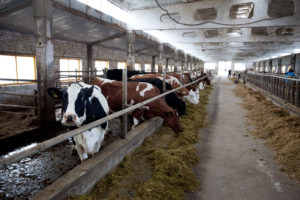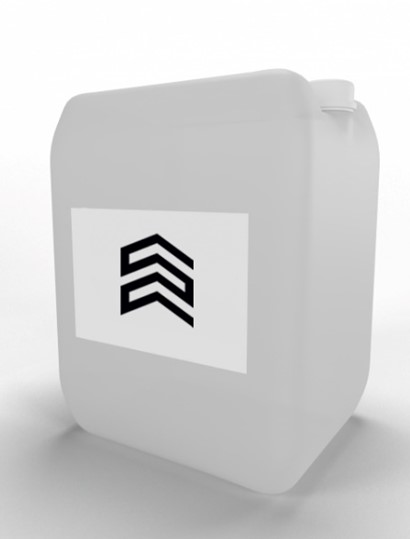German scientists brought eggs to clean water

Each German eats approximately 230 eggs a year - boiled for breakfast, in the form of omelettes, in baked goods, pasta, and so on. There was a heated debate about how many eggs one should eat per week this spring. Organic eggs are in particular demand in stores. Buyers are confident that eggs from happy chickens who walk in the fresh air and receive exclusively natural eco-food that does not contain animal by-products, pesticides, chemical and synthetic impurities, antibiotics and hormones are much tastier and healthier than others. But if almost no one doubts the very benefits of bio-eggs, then questions may arise with determining their “authenticity” according to the standard stated on the label.
German scientists have developed a new method to combat possible fraud in egg labeling. it is based on nuclear magnetic resonance spectroscopy (NMR spectroscopy) and has an accuracy of 99.9 percent. Andreas Juadjur from the chemical analysis department of the German Institute of Food Technology told the dpa news agency about this. The research project was funded by the German Federal Ministry of Food and Agriculture as part of the program for the development of the organic agricultural sector, which also aims to minimize the use of synthetic fertilizers, pesticides, plant growth regulators and feed additives.
The scanning process using NMR spectroscopy allows us to quickly draw conclusions about the individual ingredients of an egg, Juadjour explained: “We basically take a fingerprint of the egg and compare that fingerprint in the form of an ingredient profile with our database.” Over the past two and a half years, scientists from Quakenbrück have examined 4,500 eggs and created a database from the resulting parameters.
The process uses artificial intelligence.
The initial goal was to develop an analysis tool that would provide information about eggs whose origin is unknown. The accuracy of the procedure depends on the reliability of the samples already available in the database, Zhuajur explains. The difficulty was that in traditional poultry farming, only three breeds of chickens are mainly raised. At the same time, there are much more of them in organic agriculture. The breed of chicken also affects the composition of the eggs it lays.
In the future, if there is a sufficiently extensive database, analysis can be carried out using artificial intelligence. And not only eggs, but also many other products of animal origin. “The research part of the project has been completed. Those who want to use this verification method on an ongoing basis will only need to recheck the available data every year, as well as expand the base,” explains the scientist.
Other products can be explored too
According to Andreas Juajour, the researchers also found that using NMR spectroscopy they can determine, for example, whether beef jerky was prepared dry or wet. From which it was concluded that the new process could be suitable for the study of any food of animal origin. The goal of the project, which was achieved, was to find a method that could accurately prove that a product complies with environmental standards. This is important both for farmers to be able to confirm the legitimacy of the labeling of their products, and for the consumer - to be sure that you are buying exactly what is declared on the label, in the case of eggs - that they correspond to the “organic” label. As Juajour explained: “There are cases of fraud, and therefore it is important that the products can be verified.”
How to distinguish organic quality
In Germany, most eggs come from domestic production. According to the Federal Statistical Office in Wiesbaden, 13.1 billion eggs were produced in Germany in 2023. However, only about 13.5 percent comes from organic farming , whose products may be labeled "organic", and about 22 percent from farms where chickens are kept so-called free-range. The difference between these species is that biochickens have a little more space in the room where they live. There are up to six laying hens per square meter of area. In a free-range system, there are nine chickens per square meter. And also, as mentioned above, the quality of their food matters.
When purchasing eggs, you can find out their origin and method of cultivation by the code with which each egg is marked . The number "0" at the beginning is an indicator of bioquality. However, please note that the code only applies to unprocessed, raw eggs.
Read together with it:
- An HSE expert reported on the "evolution of inequality" in access to healthcare.An HSE researcher analyzed Russians' access to healthcare over a ten-year period. In 2021, the influence of financial factors became noticeable for the first time: low income reduces the likelihood of visiting a DOCTOR.Over the ten years from 2011 to 2021, the number of Russians requiring medical care but not receiving it remained virtually unchanged, according to a study by Lyudmila Zasimova, hea...
- Низкое предложение и устойчивый спрос: в Аргентине растут цены на мясоЦены на говядину снова выросли, что отразилось на полках супермаркетов и в мясных магазинах. За последние две недели розничные цены выросли на 8–12%, а на некоторые популярные отрубы рост превысил 15% по сравнению с октябрем. Тем не менее, продажи остаются высокими: потребители продолжают покупать, принимая новые цены и закрепляя тенденцию, которая повторяется каждый год в конце года, когда спрос ...
- В Тульской области уничтожили 24 кг санкционных сыров и мясных продуктов из ЕвропыВо время совместной проверки с транспортной прокуратурой из оборота было изъято 24,45 кг сыров и мясных изделий, произведенных в таких странах, как Дания, Испания, Норвегия, Италия, Ирландия и Франция. Ввоз данной продукции на территорию России запрещен в соответствии с указом Президента, касающимся специальных экономических мер. Изъятая продукция была ликвидирована путем измельчения и денатурации...
- Смоленская область — лидер России по производству крольчатиныВ интервью «Агроэксперту» заместитель председателя регионального правительства Алексей Кучумов отметил, что регион достиг самодостаточности по таким продуктам, как яйца, мясо и картофель, превышая уровень 100%. Кроме того, Смоленская область занимает первое место по посевным площадям льна, а также активно развивает молочное животноводство, с общим поголовьем более 1......
- Pharmaceutical companies see a threat to EU security due to bacteria in UkraineAntibiotic-resistant superbugs have been detected in Ukrainian soldiers since the beginning of the conflict, and now they pose a threat to Europe, according to a foundation developing antibiotics.The Ukrainian conflict threatens Europe with antibiotic-resistant "superbugs," said Henry Skinner, CEO of the AMR Action Fund, which specializes in investing in antimicrobials. His article was published o...



























































